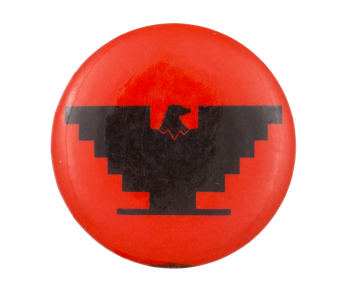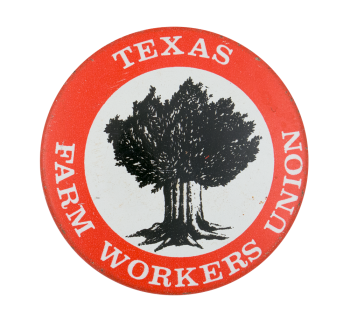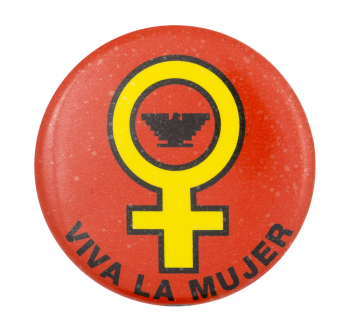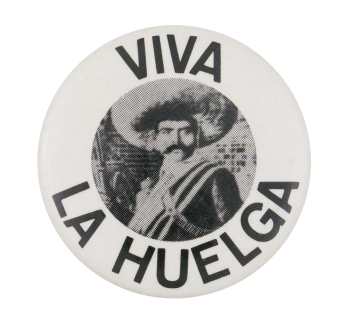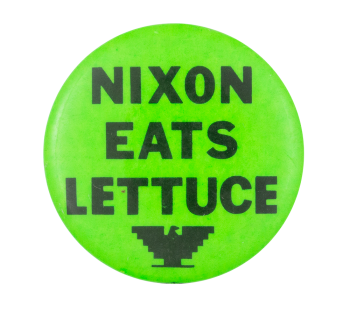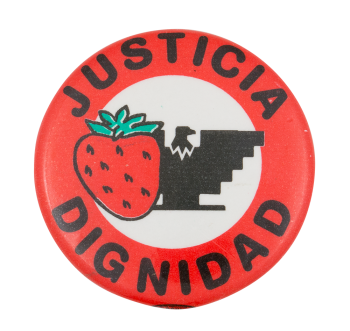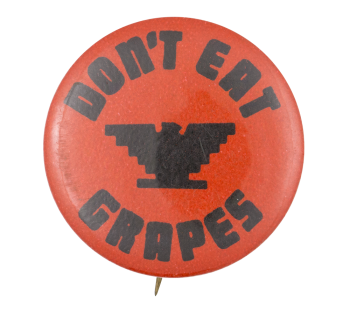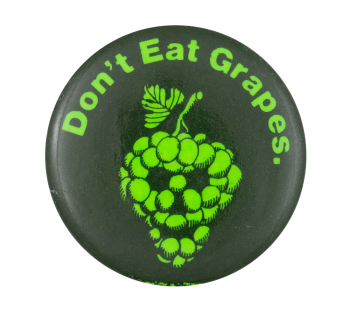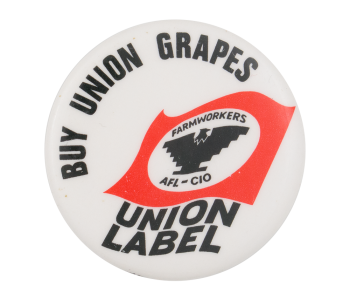United Farm Workers Symbol
| Category | |
|---|---|
| Additional Images | |
| Sub Categories | |
| Image Description | Black illustration of an Aztec eagle on a red background |
| Back Style | |
| The Shape | |
| The Size | |
| Year / Decade Made | |
| Additional Information | The Aztec eagle is the symbol of the United Farm Workers (UFW) union, which works to support the rights of farm workers. The UFW (originally the National Farm Workers Association) was co-founded by civil rights activist Cesar Chavez and women’s rights activist Dolores Huerta in 1962. In the 1970s, the UFW became the recognized bargaining agent for approximately 50,000 farm workers and gained national support. |
| Catalog ID | CL0378 |

